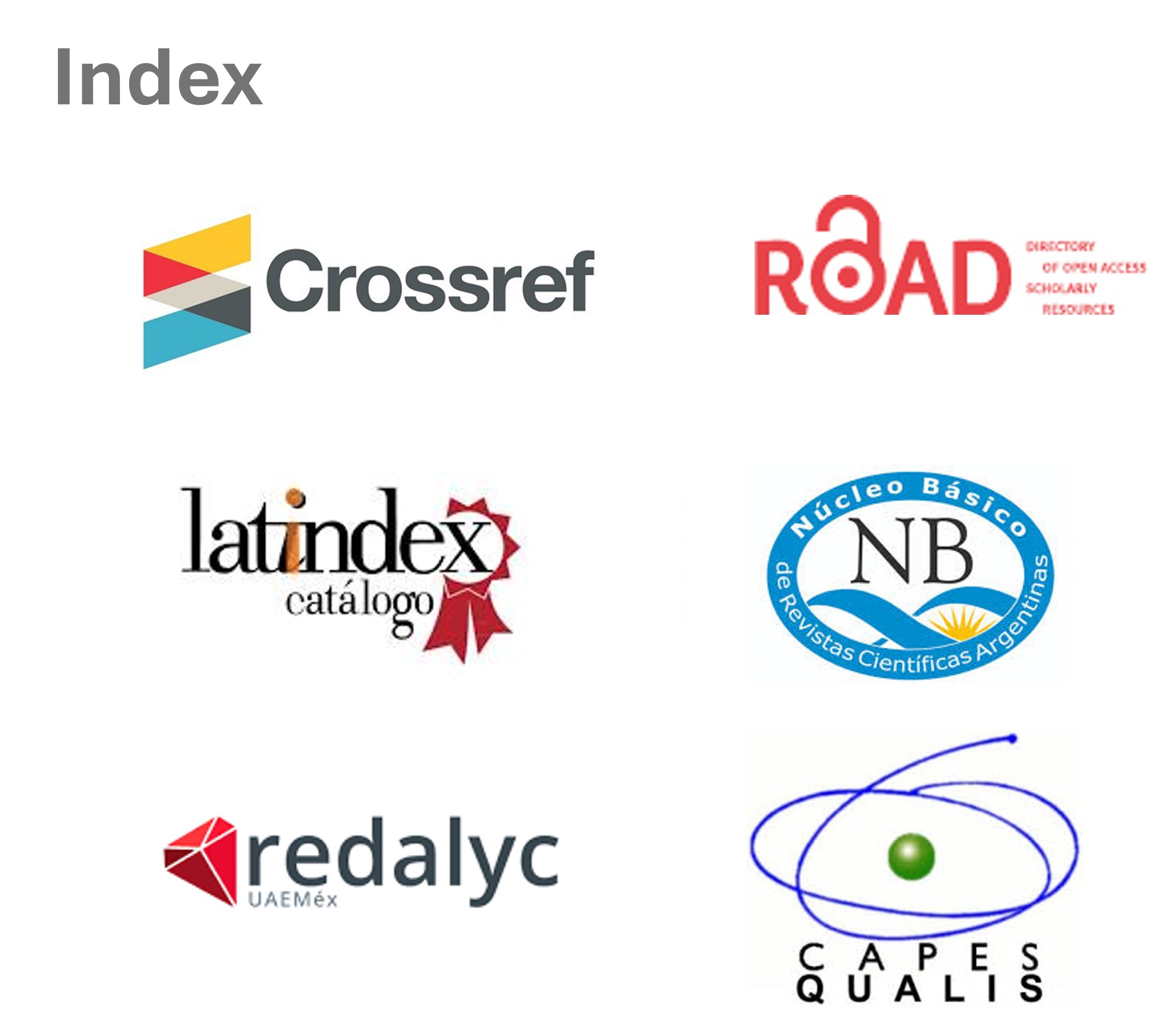Science, gender and self-representation: Study of the hashtag #mulheresnaciencia on Instagram
DOI:
https://doi.org/10.48160/18517072re55.210Keywords:
women in science, representation, identity, stereotypes, online mediaAbstract
Stereotyped media representations have historically been associated with the persistence of gender inequalities in Science and Technology (S&T), demanding the production and study of more diverse representations in this field. Therefore, the objective of this paper is to examine the self-representations of women scientists in online media, based on the use of Instagram in the Brazilian context. For this, it was proposed to investigate the posts linked to the hashtag #mulheresnaciencia between October and November 2021, using qualitative content analysis. Three main thematic categories were verified: appropriation and reconfiguration of the “scientist” stereotype; gender claim in S&T; and construction of identities and subjectivities in S&T. Among these axes, the uses of the hashtag facilitated the circulation of representations of women in science from plural perspectives and contributed to the fight against stereotypes, especially when women appropriated technological resources and exercised the production of themselves as subject agents in the area of S&T.
References
Banchefsky, S; J. Westfall; B. Park y C. M. Judd, (2016), “But You Don’t Look Like A Scientist!: Women Scientists with Feminine Appearance are Deemed Less Likely to be Scientists”, Sex Roles, 75, pp. 95-109.
Bardin, L. (2011), Análise de Conteúdo, São Paulo, Edições 70.
Benson-Greenwald, T. M.; M. P. Joshi y A. B. Diekman, (2022), “Out of the Lab and Into the World: Analyses of Social Roles and Gender in Profiles of Scientists in The New York Times and The Scientist”, Frontiers in Psychology, 12, pp. 1-10
Bruno, F.; B. Cardoso; M. Kanashiro; L. Guilhon y L. Melgaço (Orgs.) (2018), Tecnopolíticas da vigilância, São Paulo, Boitempo.
Campanella, B. (2019), “Em busca do reconhecimento midiático: a autorrealização do sujeito na sociedade midiatizada”, E-Compós, 22, (1), pp. 1-19.
Carr, J.; E. Whitelegg; R. Holliman, E. Scanlon; B. Hodgson (2009), (In)visible Witnesses: Drawing on young people’s media literacy skills to explore gendered representations of science, technology, engineering and mathematics, Bradford, UKRC.
Carvalho, V. B. y L. Massarani (2017), “Homens e mulheres cientistas: questões de gênero nas duas principais emissoras televisivas do Brasil”, Intercom - RBCC, São Paulo, 40, (1), pp. 213-232.
Chambers, D. W. (1983), “Stereotypic images of the scientist: The draw-a-scientist test”, Science Education, 67, (2), pp. 255-265.
Cruz, M. (2002), “Novas tecnologias e impacto sobre a mulher”, en Costa, A. y C. Sardenberg (eds.), Feminismo, Ciência e Tecnologia, Salvador, REDOR/NEIM-FFCH/UFBA, pp. 121-139.
D’Andréa, C. (2020), Pesquisando plataformas online: conceitos e métodos, Salvador, EDUFBA.
Finlay, S. M.; S. Raman; E. Rasekoala; V. Mignan; E. Dawson; L. Neeley y L. A. Orthia (2021), “From the margins to the mainstream: deconstructing science communication as a white”, Western paradigm. Journal of Science Communication, 20, (1), pp. 1-12.
Flicker, E. (2003), “Between brains and breasts—women scientists in fiction film: on the marginalization and sexualization of scientific competence”, Public Understanding of Science, 12, pp. 307-318.
Fragoso, S.; R. Recuero e A. Amaral (2011), Métodos de pesquisa para internet, Porto Alegre, Sulina.
Goffman, E. (1985), A representação do eu na vida cotidiana, Petrópolis, Vozes.
Hall, S. (2016), Cultura e representação, Rio de Janeiro, Apicuri.
Halpern, M. (2019), “Feminist standpoint theory and science communication”, Journal of Science Communication, 18, (4), pp. 1-6.
Haraway, D. (1988), “Situated Knowledges: The Science Question in Feminism and the Privilege of Partial Perspective”, Feminist Studies, 14, (3), pp. 575-599.
Harding, S. (1995), “‘Strong objectivity’: A response to the new objectivity question”, Synthese, 104, pp. 331-349.
Hine, C. (2016). “Estratégias para etnografia da internet em estudos de mídia”, en Campanella, B. y C. Barros (eds.), Etnografia e consumo midiático: novas tendências e desafios metodológicos, Rio de Janeiro, E-papers.
Hollanda, H. B. (2019), Explosão feminista: arte, cultura, política e universidade, São Paulo, Companhia das Letras.
Kahle, J. B. (1989), “Images of Scientists: Gender Issues in Science Classrooms”, What Research Says to the Science and Mathematics Teacher, 4, pp. 2-9.
Kirby, D. A. (2008), “Science and technology in film Themes and representations”, en Bucchi, M. y B. Trench (eds.), Routledge Handbook of Public Communication of Science and Technology, New York, Routledge, pp. 97-112.
Latour, B. (2004), “‘Não congelarás a imagem’, ou: como não desentender o debate ciência-religião”, Mana, 10, (2), pp. 349-376.
Leal, L. P. V. y R. F. Salvi (2021), “Exemplos de divulgação científica pela perspectiva decolonial”, Revista do EDICC, 7, pp. 110-120.
Leal, T. (2017). “Elas merecem ser lembradas: feminismo, emoções e memória em rede”, Intercom - RBCC, 40, (2), pp.169-185.
Lewenstein, B. (2019), “The need for feminist approaches to science communication”, Journal of Science Communication, 18, (4), pp. 1-5.
Liu, F.; D. Ford; C. Parnin y L Dabbish (2017), “Selfies as Social Movements: Influences on Participation and Perceived Impact on Stereotypes”, PACM on Human-Computer Interaction, 1, pp. 72:1-72:21.
Maffia, D. (2002), “Crítica feminista à ciência”, en Costa, A. y C. Sardenberg (eds.), Feminismo, Ciência e Tecnologia, Salvador, REDOR/NEIM-FFCH/UFBA, pp. 25-38.
Massarani, L.; Y. Castelfranchi y A. E. Pedreira (2019), “Cientistas na TV: como homens e mulheres da ciência são representados no Jornal Nacional e no Fantástico”, Cadernos Pagu, 56, pp. 1-34.
Mead, M. y R. Metraux (1957), “Image of the Scientist among High-School Students: A Pilot Study”, Science, 126, pp. 384-390.
Moreira, I. y L. Massarani (2002), “Aspectos históricos da divulgação científica no Brasil”, en Massarani, L.; I. Moreira y F. Brito (eds.), Ciência e público: caminhos da divulgação científica no Brasil, Rio de Janeiro, Casa da Ciência – Centro Cultural de Ciência e Tecnologia da Universidade Federal do Rio de Janeiro, Forum de Ciência e Cultura, pp. 43-64.
Natansohn, G. y F. Rovetto (2019), “Apresentação”, en Natansohn, G. y F. Rovetto (eds.), Internet e feminismos: Olhares sobre violências sexistas desde América Latina, Salvador, EDUFBA, pp. 9-13.
Nery, A. S. D.; L. F. E. Cabral; A. L. N. de Sousa (2021), “Mulheres negras e a divulgação científica nas mídias e redes sociais”, Revista do EDICC, 7, pp. 121-128.
Olinto, G. (2011), “A inclusão das mulheres nas carreiras de ciência e tecnologia no Brasil”, Inclusão Social, 5, (1), pp. 68-77.
Polivanov, B. y D. Santos (2016), “Términos de relacionamentos e Facebook: desafios da pesquisa etnográfica em sites de redes sociais”, en Campanella, B. y C. Barros (eds.), Etnografia e consumo midiático: novas tendências e desafios metodológicos, Rio de Janeiro, E-papers, pp. 179-198.
Sibilia, P. (2015), “O universo doméstico na era da extimidade: Nas artes, nas mídias e na internet”, Revista Eco Pós, Arte, Tecnologia e Mediação, 18, (1), pp. 133-147.
Silva, T. T. da (2000), “A produção social da identidade e da diferença”, en Silva, T. T. da (ed.), Identidade e diferença: a perspectiva dos estudos culturais, Petrópolis, Vozes, pp. 73-102.
Steinke, J. (2005), “Cultural Representations of Gender and Science: Portrayals of Female Scientists and Engineers in Popular Films”, Science Communication, 27, (1), pp. 27-63.
Steinke, J. y P. Paniagua Tavarez (2017), “Cultural Representations of Gender and STEM: Portrayals of Female STEM Characters in Popular Films 2002-2014”, International Journal of Gender, Science and Technology, 9, (3), pp. 244-277.
Steinke, J.; B. Applegate; J. R. Penny y S. Merlino (2021), “Effects of Diverse STEM Role Model Videos in Promoting Adolescents’Identification”, International Journal of Science and Mathematics Education, 2, pp. 255-276.
Woodward, K. (2000), “Identidade e diferença: uma introdução teórica e conceitual”, en Silva, T. T. da (ed.), Identidade e diferença: a perspectiva dos estudos culturais, Petrópolis, Vozes, pp. 7-72.
Mazzucato, M. (2018), “Mission-Oriented Innovation Policies: Challenges and Oportunities”, Industrial and Corporate Change, 27, (5), pp. 803-815.
Mazzucato, M. (2021), Mission Economy: a Moonshot Guide to Changing Capitalism, Londres, Allen Lane-Penguin.
Mazzucato, M. y C. Penna (2016), The Brasilian Innovation System: A Mission-Oriented Policy Proposal, Brasilia, Centro de Gestão e Estudos Estratégicos (CGEE).
Mercado, A. y K. Córdoba (2018), “Universidad latinoamericana: ciencia, tecnología e innovación para afrontar los imperativos de la sustentabilidad”, en Ramírez Gallegos, R. (coord.) La investigación científica y tecnológica y la innovación como motores del desarrollo humano, social y económico para América Latina y el Caribe, Caracas y Córdoba, IESALC-UNC.
Ornstein, R. (2010), “El desarrollo nuclear argentino: 60 años de una historia exitosa”, CNEA, 10, (37-38), pp. 6-14.
Pérez, C. (2001), Cambio tecnológico y oportunidades de desarrollo como blanco móvil, Santiago, CEPAL.
Ramírez, D. (2017). 60 aniversario del Instituto Nacional de Tecnología Agropecuaria, Buenos Aires, Ediciones INTA.
Ramírez Gallegos, R. (2016), “Paraíso del (bio)conocimiento abierto y común para el Buen Vivir”, en Ramírez Gallegos, R. (coord.): Universidad urgente para una sociedad emancipada, Quito, Centro Internacional de Estudios Superiores de Comunicación para América Latina (CIESPAL), pp. 449-468.
Ramírez Gallegos, R. (2017), La gran transición: en busca de nuevos sentidos comunes, Quito, Centro Internacional de Estudios Superiores de Comunicación para América Latina (CIESPAL).
Zelaya, M., Burgardt, N., Chiarante, N., Piñeiro, F., Alcain, J., González Maglio, D. y A. C. Carro (2021), “Producción pública de medicamentos y vacunas: análisis histórico y de políticas científicas con foco en el caso argentino”, en Giri, L. y J. Sutz (eds.), Bernabé, F. (coord.): Filosofía de la ciencia y sociedad en Latinoamérica, Vol I. Medioambiente y sociedad y Política científica. Sao Carlos y Buenos Aires, Asociación de Filosofía e Historia de la Ciencia del Cono Sur (AFHIC), pp. 173-200.
Published
How to Cite
Issue
Section
License
Copyright (c) 2023 Redes. Journal of Social Studies of Science and TechnologyThe documents published here are governed by the licensing criteria
Creative Commons Argentina.Atribución - No Comercial - Sin Obra Derivada 2.5 https://creativecommons.org/licenses/by-nc-nd/2.5/ar/













